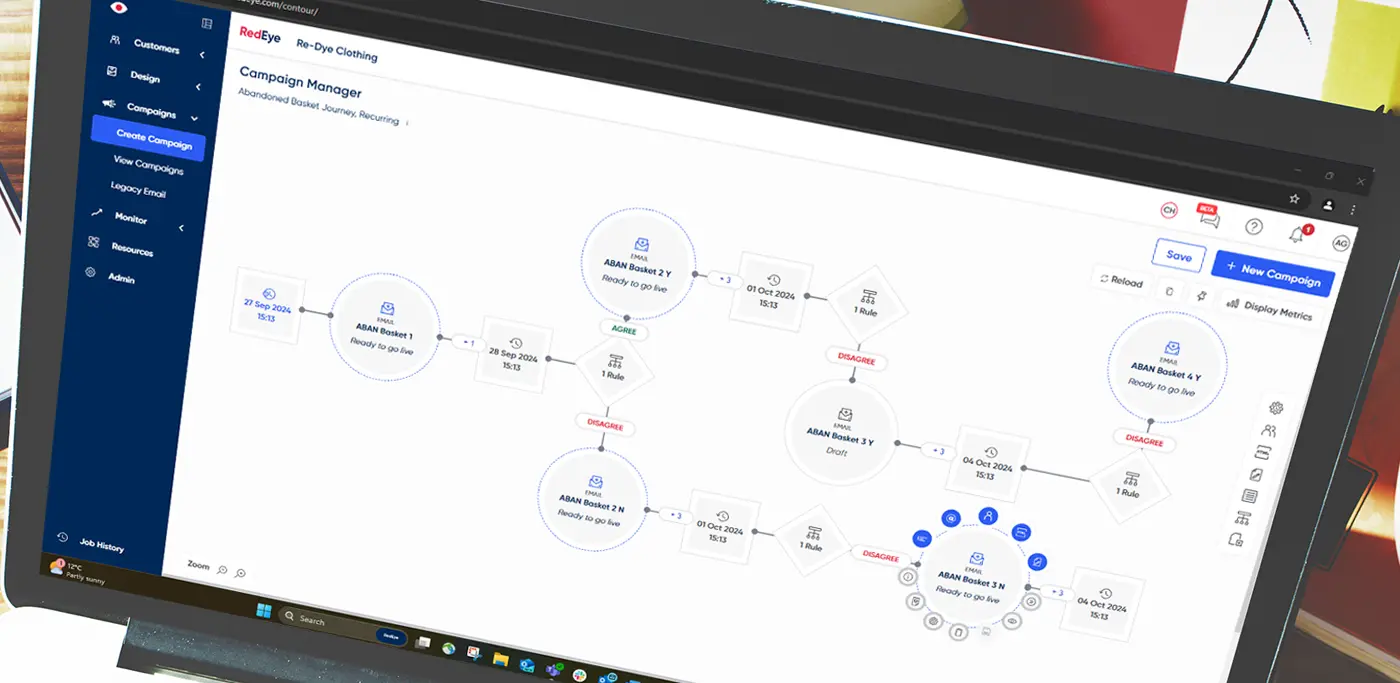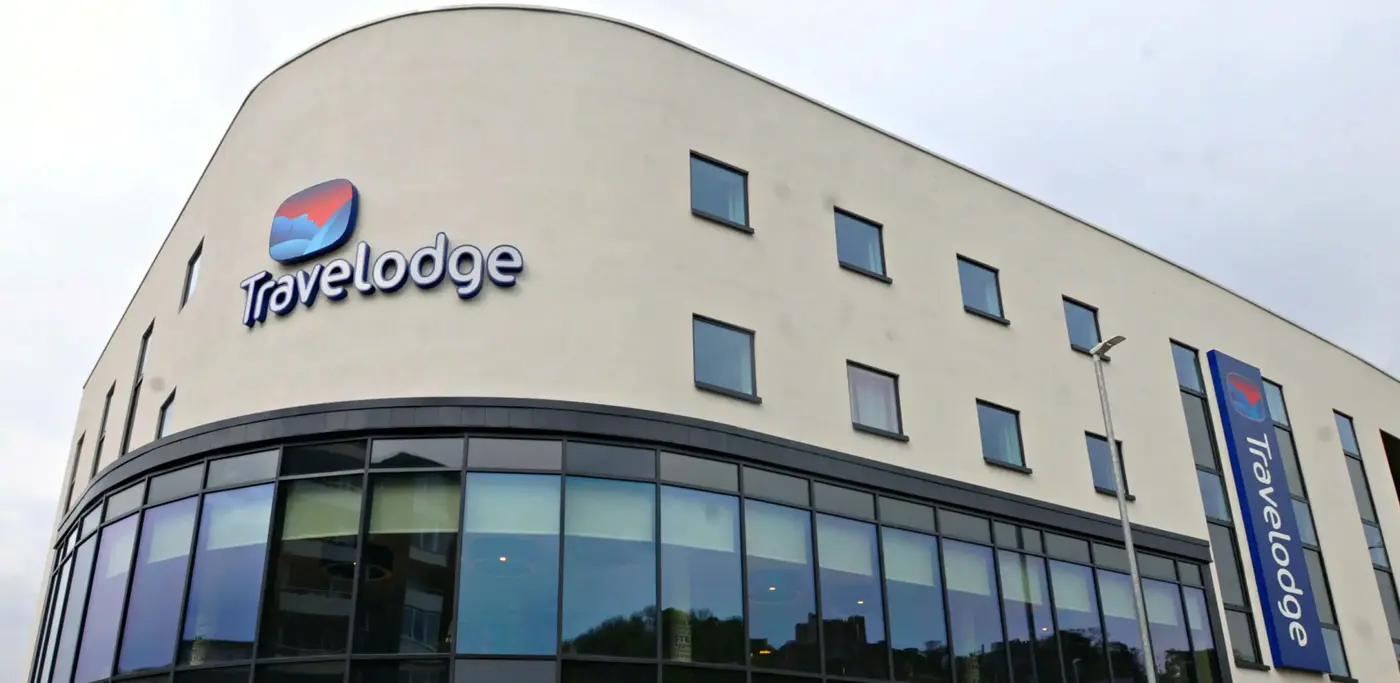Abandoned basket emails are known to be some of the most successful automations marketers can set up. However, it is an art!
Here you can learn how to set up successful abandoned basket automations and best practices to keep them optimised.
Quick reference
- What are abandoned basket emails?
- The importance of abandoned basket emails
- Abandoned basket email best practice and tips
- How to implement your abandoned basket email journey
- Abandoned basket email examples
- To summarise

What are abandoned basket emails?
An abandoned basket email are emails that are sent when a customer adds your products to their basket and then shuts the tab or leaves your website without completing their purchase.
This action will then cause an email to be triggered to land in their inbox any time from immediately to 24 hours later, prompting them to complete their transaction.
This reminder email has been proven to have a great success rate with up to 40% open rates and 4.64% conversion rate, which are much higher then your typical marketing email results.

The importance of abandoned basket emails
Over 70% of online shopping baskets are abandoned, which equals to a huge portion of missed revenue. Your customers have browsed your website, added items to their basket and then at some point they have decided to abandon their purchases and not checkout.
There could be many factors that contribute to this. The top reasons for baskets being abandoned are:
- High delivery costs
- Payment security concerns
- Choice of payment methods
- Discount codes not working
- Needing to create an account
- Complicated checkout process
- Unsatisfactory returns policy
- Unsatisfactory delivery times
- Shopper was only browsing
- Total basket was too expensive
Quite a few of these abandonments come at the checkout stage where there is an opportunity to build loyalty and reduce your abandoned baskets.
Such as having clear returns policies, offering a wide variety of delivery and payment options, or having a checkout process that is as simple as possible.
An abandoned basket is an unsuccessful sale, and it’s our job to make sure that we get the conversion. As marketers, we need to see that even though there is a high percentage of abandoned baskets occurring, if you have the customers’ data there is also a huge opportunity.
They are a warm lead as they have been on your site, logged in and selected items of interest, so how do you lead them back and tempt them to complete their purchase?
This is where setting up an abandoned basket email workflow comes in.

Abandoned basket email best practice and tips
There are a number of abandoned basket email best practices, however, they also need to be adapted to your customers’ profile.
An overall email best practice is to talk to your customers directly and personally to entice them back and complete their purchase, generic emails here won’t be successful, they need to be specific, relevant and timely.
Subject line tactics
An abandoned basket campaign journey works great as it can combine key selling tactics.
For subject lines you can use urgency to complete the transaction ‘Hurry, these wont be in stock for long’ or fun ‘we saved this for you’ to even personal ‘[[Firstname]] we know you will look great in this’ to help engage and grab the attention of your customers.
The subject line is a critical aspect of this type of campaign, so it needs to be eye-catching, intriguing and/or funny.
Lead with personalisation
Personalisation is key, so on top of featuring their name be sure to include the exact products that were abandoned and maybe even some UGC (User Generated Content) of the product to really be appealing.
Consumers are 6x more likely to make a purchase of a product if it shows images from social media*.
Another way to personalise your emails is with dynamic banners, displaying information specific to each customer, it may be how many loyalty points they have, the countdown to the end of the offer or a discount for those who meet your VIP criteria.
Do you ask questions?
Asking questions within your email copy is also a great way to coax shoppers back.
‘Did you mean to forget this?’ or include your product ‘Jessica, won’t you be cold without this coat?’ encouraging your shoppers to visualise themselves using their new product.
Asking questions within your marketing is a proven tactic that is effective in engaging your audience.
To discount or not to discount?
Another major draw can be offering a discount code or free delivery, to coax back your customers. This is a major incentive however, we think it’s best to save your discount codes for your loyal customers.
The majority of shoppers tend to abandon their basket for checkout related reasons and nowadays many savvy shoppers will abandon their basket on purpose for codes and we don’t want to give margin away too soon.
What is the best time to send abandoned basket emails?
When deciding on the best lead time for your abandoned basket email it needs to be dictated by your customer. As a rule of thumb, the best time is within 3 hours of the abandonment happening.
However, a fast fashion retailer may find more success with speedier times of less than an hour but brands with products of higher price tags or products that take more consideration.
Whilst buying, say a television, will benefit from a longer time delay, giving the purchaser more time to mull over the decision as if they do then click on your email their likelihood to purchase is very high.
Testing is your best friend here to hone in and find the most successful time for your brand and customers.
Another recommendation we would make is setting a rule so your emails land within sociable shopping hours, typically 8am until 10pm. We have seen some emails with a 12-hour trigger land in inboxes at 2am, which is not the opportune time for conversion.
Limiting the hours will ensure that your customers are more likely to click and purchase straight away.

Make it multi-stage
Typically we would recommend having multi-stage abandoned basket emails as these generate the best results.
With each stage increasing the urgency, giving different perspectives or selling points of the products, and refreshing the images and the subject lines of each email to entice customers.
As the top reasons for abandoning baskets are at the checkout, a great theme to include in your journey is your great delivery terms.
This may be quick delivery times, thresholds for free delivery or easy-to-use and free returns policies to reassure your customers that you offer great customer service.
Let your customers help you sell
Another aspect that can be covered in your abandoned basket email journey is reviews. If this is something that you gather, you can easily map it to be included within your emails alongside the product that they failed to purchase.
One of the most persuasive ways to convince a customer they need something is to hear it from someone that has brought it themselves. It is a great sign of advocacy and is powerful in influencing a purchase.
Boost the value of their basket
Your abandoned basket journey is also the perfect time to utilise the opportunity to cross-sell or up-sell.
Offering complimentary items to the product they had been browsing, this may be full outfit looks, upgrades of the same items and its added benefits or what other shoppers also brought when buying the same item.
Don’t set it and forget it
Another best practice tip is to make sure these automations aren’t set up, left to run and forgotten. We would recommend reviewing your automated journeys quarterly to refresh them and keep them appealing to customers.
Read our 10 tips to make sure your automated email creatives don’t go stale.

How to implement your abandoned basket email journey
Implementing your abandoned basket email workflow with an email marketing platform like RedEye is super easy.
Once you have planned out the journey you would like your customers to go on you can create dynamic and data-driven emails which are linked by a set of rules.
You can decide if someone does click on the email and purchase they will drop out of this customer journey.
However, if they clicked but didn’t purchase they received Email A and if they didn’t click they receive Email B. In between each email you can set rules which will dictate how often these emails will be sent, so you can space them out from every day to every few days.
An example could be like this:
-
1. Email 1 ‘ You have forgotten this’
If no conversion – delay 1 day
2. Email 2 – Item in use and customer reviews
If no conversion – delay 3 days
3. Email 3 – Delivery and return process promotion
If no conversion – delay 3 days
4. Email 4 – Urgency ‘quick these won’t be around for long’
No conversion – completed journey
The data collected from your website tagging should be connected to your email platform as soon as the basket is abandoned your users will be enrolled into your abandoned basket automation.
Within this journey, you can also include other forms of communication encapsulating different channels.
During their purchasing journey, 73% of customers will use multiple channels, so contacting them with an omnichannel approach will also help to persuade them to complete their purchase. Channels you could include are:
SMS marketing
SMS messaging when used in conjunction with email marketing can see a huge increase in success. As text messages receive a 98% average open rate it’s the perfect addition to add urgency if something in their basket is about to expire, such as a discount code, or something is close to going out of stock.
Website personalisation
Website personalisation allows you to create a hyper-personalised user experience. Using your customer data to customise what they see on your website is perfect for showing them the products they almost bought last time.
Social, search and display retargeting
Social, search and display retargeting will also catch their attention when they are on social media or searching online for other items and draw them back to your site by delivering a seamless experience by making the content relevant to each user.

Abandoned basket email examples
In this case study with Travelodge we created a 14-stage hyper-personalised abandoned basket journey which generated incredible results.
Travelodge holds a wealth of data on their guests and they identified that this journey would be the first touchpoint a prospective booker would receive from Travelodge.
They knew that the lead time between researching hotel availability to finally completing a booking can be a long window and they knew it was important to consider all of prospect bookers’ thoughts and purchasing behaviours when scoping an abandonment basket email journey.
Travelodge’s previous abandonment email included much of the hotel details all in one creative. However, the new creatives split the content over multiple emails to highlight each particular benefit – resulting in higher levels of recall and understanding of the options open to the booker.
Each email focussed on a particular detail about their potential stay, from hotel information, room choice options, café and bar choices and upgrades etc in a strategic frequency which spanned 60 days.
Sending abandonment emails at a high frequency initially then less frequently as the journey progressed worked as a strategy as those wanting to book soon completed their journey quickly, however, those that needed more time were still receiving communications about their stay.
With this amount of emails and varying information, it demanded that each email needed to be relevant, personal and accurate. Plus, to avoid unsubscribe rates increasing each email creative needed to harness all the personalisation power that data-driven marketing automation can offer.
When launched this campaign saw a 50% increase in email revenue and a 12% increase in Unique Open Rates for Travelodge. Plus, the unsubscribe rate dropped to a very healthy 0.04% for the new journey – reinforcing that subscribers are more than happy to receive more emails if they are personalised and relevant.

To summarise
If you haven’t already, now is the time to set up your abandoned basket email series.
Think about your workflow and how you will create a journey for your customers rather than a one-time email.
Test different types of subject lines and when the most successful time to send your emails is by measuring when they have converted and give your workflow a little refresh every couple of months to keep it optimised.
If you want more guidance on how you can set up this type of automated campaign book a demo with us and we would be happy to advise you.
*https://sproutsocial.com/insights/social-media-statistics/
Enjoyed this article? Sign-up to receive updates
Enjoyed this article? Sign-up to receive updates






